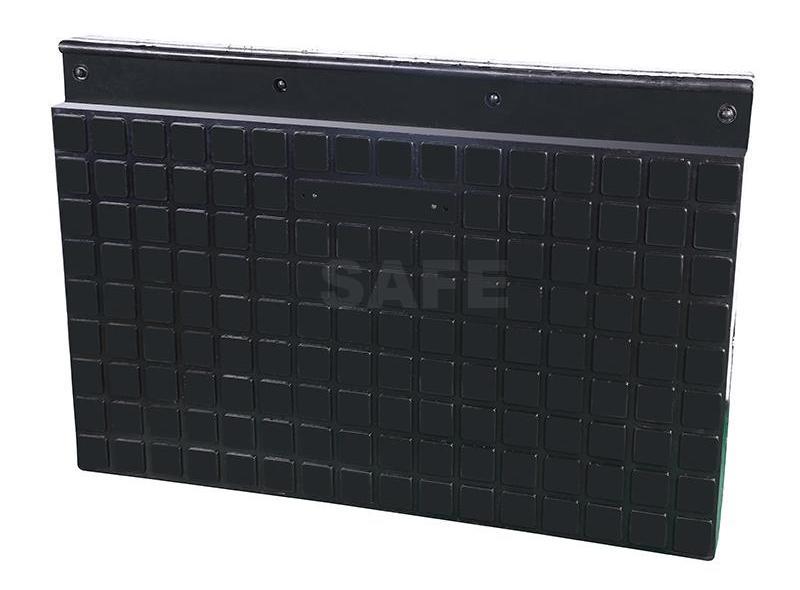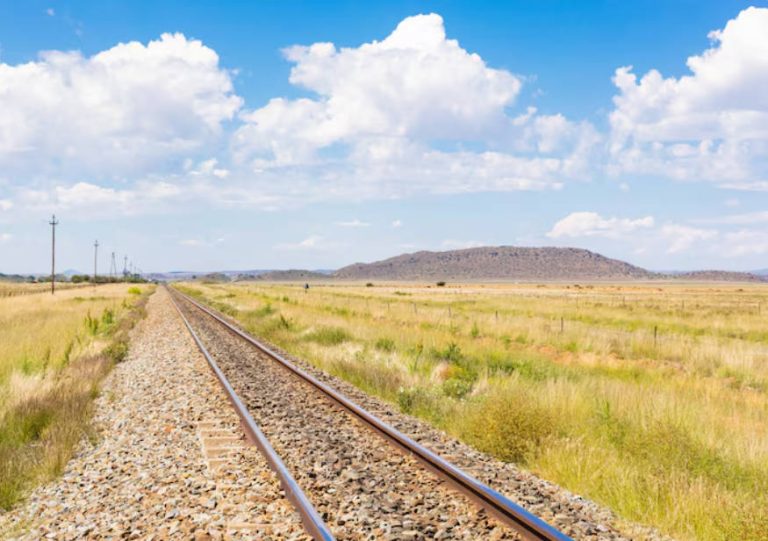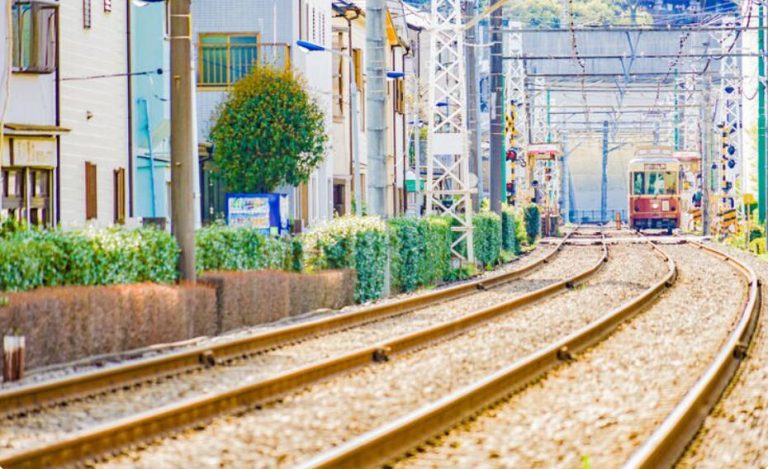A railway rubber level crossing is a specialized component of the railway system designed to facilitate safe and smooth intersections of railways and roads. Unlike typical concrete or asphalt crossings, rubber level crossings have a smooth surface for automobiles and people, with improved shock absorption, noise reduction, and longevity.

Safety and accessibility come first at road-rail crossings. Rubber level crossings provide accident avoidance, reduce vehicle and rail track wear, and involve lower long-term costs of maintenance. Today, these crossings are increasingly becoming the default choice as opposed to traditional material in modern urban and industrial environments.
SAFE Expertise in Rubber Level Crossings
SAFE is a top-rated manufacturer of railway rubber products, providing first-class rubber pads for concrete sleeper railways. Our Shanxi plant utilizes the latest manufacturing technology, from totally automatic mixing, batching, and vulcanization lines, to mass-produce high-strength, wear-resistant rubber pads for high-speed and general railways. ISO14001 environmental management system certification and continuous innovation within SAFE ensure that every crossing is safe to a high level and facilitates sustainable infrastructure development.
Key Components and How They Work
Primary Components of a Rubber Level Crossing
A typical rail rubber level crossing includes:
- Rubberized level crossing pads: The road surface on which one travels over, designed to sustain a heavy traffic load.
- Rail supports and pads: Provide additional stability and protect railway sleepers from erosion.
All these components work together to create a smooth ride along railroad tracks, making users more comfortable and safe.
How Rubberized Pads Work
Rubber pads reduce vehicle impact, deflecting transferred vibrations into adjacent buildings. It is their ability to deform that takes in energy otherwise used to generate noise or deform buildings. The appearance not only enhances the driving experience but also the life of crossing and adjacent rail components.
High-Quality Materials
SAFE uses top-of-the-line rubber compounds capable of resisting wear, weather, and chemical assault. Computerized production lines provide uniform quality, producing products with uniform performance against heat fluctuation, heavy weights, and extreme weather.

Key Features and Benefits
Enhanced Shock Absorption & Noise Reduction
Rubber level crossings effectively dampen the vehicle’s impact, minimizing vibration and noise transfer. The urban setting particularly benefited from this in surrounding residents, who can now appreciate quieter surroundings.
Weather Resistance and Durability
SAFE crossings prove enduring. Their sturdy build withstands extreme temperatures, heavy traffic, and severe weather, delivering consistent performance for decades ahead.
Anti-Slip Surface Design
Safety comes first, always. SAFE crossings’ slip-resistant surface facilitates ease of grip for drivers and pedestrians and minimizes the chances of accidents, especially on slippery roads.
Compatibility with Any Rail Type
SAFE crossings are highly adaptable and readily transformable into various unique rail gauges all over the globe, thus compatible for urban transit systems, industrial freight routes, and high-speed rail systems.
Installation and Maintenance
Easy installation process
The installation of SAFE’s railway rubber level crossings is straightforward due to its modularity. This leads to minimal labor in the installation process while causing little disturbance to the conventional transport systems.
Low maintenance requirements
After installation, the crossings need very little maintenance due to their rugged building materials that wear out with regular use very effectively—money & time saved on maintenance as opposed to traditional ones like asphalt/concrete surfaces, which require constant repair/replacement as they deteriorate over time/weathering effects, etc.
SAFE crossing long-term performance
Our products consistently deliver excellent long-term performance across a wide range of operating conditions—whether deployed in busy city center environments or rural regions with adequate infrastructure support in adverse terrain/weather conditions as well.
Applications and Use Cases
Urban Road-Rail Intersections
In urban environments, land is limited, and traffic densities are high. SAFE crossings provide compact, heavy-duty solutions that integrate into existing road and rail infrastructure.
Industrial and Freight Access Points
For heavy-duty industrial applications, SAFE crossings offer the stability and rigidity to withstand rigorous day-to-day use, ensuring safe and effective product transportation.
Temporary or Emergency Crossings
The modularity of SAFE ensures immediate deployment to emergency or temporary crossings. Easy assembly and easy disassembly ensure rapid response to impromptu infrastructure needs.

Environmental and Economic Impact
Eco-Friendly Materials
SAFE’s commitment to sustainability is certified by ISO14001 and the use of sustainable materials. Our eco-friendly manufacturing process minimizes environmental impacts at top levels of quality.
Quieter, Cleaner Cities
Reducing noise pollution and vibration, SAFE crossings enhance the livability of cities. Neighborhoods along railways experience added comfort and a higher quality of life.
Cost Efficiency Over Time
Investment in SAFE crossings is cost-effective in the long term. Lower maintenance and longer product life lower the cost of ownership over conventional asphalt or concrete crossings.
Conclusion
Rubber railway level crossings are part and parcel of modern transportation infrastructure, offering improved safety, durability, and environmental benefits over conventional counterparts. The design, material, and manufacturing know-how of SAFE optimize all of its crossings to the highest performance and reliability in applications covering a broad spectrum.
By choosing SAFE, cities, companies, and rail authorities enjoy quieter, safer, and cheaper crossings that enable sustainable development of infrastructure. Discover SAFE’s rubber level crossing solutions for your rail endeavors today.
FAQ
Q: What are the advantages of rubber level crossings over standard concrete or asphalt crossings?
A: Rubber level crossings possess several advantages, like improved shock absorption, reduced noise, durability, weather resistance, and improved safety via anti-slip surfaces. They require minimal maintenance and are easy to install, and hence are a cost-effective solution in the long term.
Q: SAFE railway rubber level crossings have a life span of about how many years?
A: SAFE crossings are constructed of long-lasting, abrasion-resistant rubber compounds for harsh service conditions. Correctly installed, they ought to be capable of offering uniform service for decades, even at high traffic densities and harsh weather conditions.
Q: Can rubber level crossings be applied for high-speed rail track?
A: SAFE does have rubber crossings, which can be used in ordinary as well as high-speed railways. With their long-lasting construction and technologically advanced components, SAFE rubber level crossings provide safety, stability, and durable longevity for use in high-speed rail applications.
Q: Is the installation and maintenance of SAFE rubber level crossings really complicated?
A: SAFE level crossings consist of a modular design that can be installed relatively quickly with minimal disruption to traffic. They have low installation costs in the sense that they are durable, which saves time and the long-term cost of concrete or asphalt level crossings.
Q: Is the SAFE rubber level crossing eco-friendly?
A: Yes, sustainability is significant to SAFE. The crossings are made of green materials and methods, and sound absorption and vibration properties make communities quieter, cleaner, and improved living places for those who live there.




